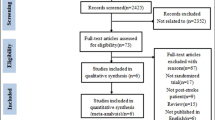Abstract
Vocal symptoms and acoustic measures of patients with multiple sclerosis (MS) are investigated in relation to the duration of the disease, stage of the disease and the degree of disability. Eighty-two patients were enrolled in this study (40 MS, 42 controls). In the MS group, the most common vocal symptoms were vocal breaks and vocal fatigue present in 10. None of the patients in the control group had voice breaks. In the male group, there was a significant decrease in the fundamental frequency, habitual pitch and maximum phonation time with a significant increase in Shimmer. In the female group, there was a significant decrease in the maximum phonation time only. There was no correlation between vocal symptoms and acoustic measures versus duration of the disease and extent of disability except for vocal fatigue which significantly associated with EDSS (expanded disability status scale) score. Patients with MS may develop vocal symptoms irrespective of the EDSS score, duration and stage of the disease. Vocal fatigue and vocal breaks are more common than hoarseness.

Similar content being viewed by others
References
Feijo AV, Parente MA, Behlau M et al (2004) Acoustic analysis of voice in multiple sclerosis patients. J Voice 18(3):341–347. doi:10.1016/j.jvoice.2003.05.004
Itoh T, Aizawa H, Hashimoto K, Yoshida K, Kimura T, Katayama T et al (2003) Prevalence of multiple sclerosis in Asahikawa, a city in northern Japan. J Neurol Sci 214(1–2):7–9. doi:10.1016/S0022-510X(03)00165-5
El-Salem K, Al-Shimmery E, Horany K, Al-Refai A, Al-Hayk K, Khader Y (2006) Multiple sclerosis in Jordan: a clinical and epidemiological study. J Neurol 253(9):1210–1216. doi:10.1007/s00415-006-0203-2
Darley F, Brown J, Goldstein N (1972) Dysarthria in multiple sclerosis. J Speech Hear Res 15:229–245
Guberman A (1994) An introduction to clinical neurology: pathophysiology, diagnosis, and treatment. Little, Brown, Boston
Hartelius L, Svensson P (1994) Speech and swallowing symptoms associated with Parkinson’s disease and multiple sclerosis: a survey. Folia Phoniatr Logop 46:9–17
Matthews WB, Compston A, Allen IV et al (1991) McAlpine’s multiple sclerosis, 2nd edn. Churchill, London, pp 43–105
Holstege G, Ehling T (1996) Two motor systems involved in the production of speech. In: Davis PJ, Fletcher NH (eds) Vocal fold physiology—controlling complexity and chaos. Singular, California, pp 153–169
Ramig LA, Scherer RC, Titze IR, Ringell SR (1988) Acoustic analysis of voices of patients with neurologic disease: rationale and preliminary data. Ann Otol Laryngol 97:164–172
Kurtzke JF (1983) Rating neurologic impairment in multiple sclerosis: an expanded disability status scale (EDSS). Neurology 33(11):1444–1452
Norusis MJ SPSS/PC+ advanced statistics 13.0 Chicago: SPSS. Inc, 2004
Langer-Gould A, Popat RA, Huang SM, Cobb K, Fontoura P, Gould MK, Nelson LM (2006) Clinical and demographic predictors of long-term disability in patients with relapsing-remitting multiple sclerosis: a systematic review. Arch Neurol 63(12):1686–1691. doi:10.1001/archneur.63.12.1686
Hast MH, Fischer JM, Wetzel AB, Thompson VE (1974) Cortical motor representation of the laryngeal muscles in Macaca mulatta 73:229–240
Brodal A (1983) Neurological anatomy in relation to clinical medicine. Edition 1983, 3rd edn. Oxford University Press, Oxford
Yoshida Y, Yatake K, Tanaka Y, Imamura R, Fukunaga H, Nagashima T, Hirano M (1998) Morphological observation of laryngeal motoneurons by means of cholera toxin B subunit tracing technique. Acta Otolaryngol Suppl) 539:98–105
Yoshida Y, Mitsumasu T, Hirano M, Kanaseki T (1984) Distribution of motoneurons in the brain stem of monkeys, innervating the larynx. Brain Res Bull 13(3):413–419. doi:10.1016/0361-9230(84)90091-1
Waxman SG (1988) Demyelinating diseases—new pathological insights, new therapeutic targets. N Engl J Med 338:323–325. doi:10.1056/NEJM199801293380510
Poser CM, Paty DM, Scheinberg L et al (1983) New diagnostic criteria for multiple sclerosis: guidelines for research protocols. Ann Neurol 13:227–231. doi:10.1002/ana.410130302
Shiba K, Yoshida K, Nakajima Y, Konno A (1997) Influences of laryngeal afferent inputs on intralaryngeal muscle activity during vocalization in the cat. Neurosci Res 27:85–92. doi:10.1016/S0168-0102(96)01136-4
Hallpike JF, Adams CWM (1983) Tourtellotte WW multiple sclerosis: pathology, diagnosis and management, vol 1. pp 1–29
Hartelius L, Runmarker B, Andersen O (2000) Prevalence and characteristics of dysarthria in a multiple sclerosis incidence cohort: relation to neurological data. Folia Phoniatr Logop 52(4):160–177. doi:10.1159/000021531
Drew M, Tippett LJ, Starkey NJ, Isler RB (2008) Executive dysfunction and cognitive impairment in a large community-based sample with multiple sclerosis from New Zealand: a descriptive study. Arch Clin Neuropsychol 23(1):1–19. doi:10.1016/j.acn.2007.09.005
Klugman TM, Ross E (2002) Perceptions of the impact of speech, language, swallowing, and hearing difficulties on quality of life of a group of South African persons with multiple sclerosis. Folia Phoniatr Logop 54(4):201–221. doi:10.1159/000063194
Muzeyyen D, Ipek M, Mine Almaz Y et al (2006) Objective and subjective evaluation of voice quality in multiple sclerosis. J Voice June 29 [Epub ahead of print]
Smeltzer SC, Skurnick JH, Troiano R et al (1992) Respiratory function in multiple sclerosis. Utility of clinical assessment of respiratory muscle function. Chest 101:479–484. doi:10.1378/chest.101.2.479
Hartelius L, Buder EH, Strand EA (1997) Long-term phonatory instability in individuals with multiple sclerosis. J Speech Lang Hear Res 40(5):1056–1072
Conflict of interest statement
There is no actual or potential conflict of interest or financial support related to this work.
Author information
Authors and Affiliations
Corresponding author
Rights and permissions
About this article
Cite this article
Yamout, B., Fuleihan, N., Hajj, T. et al. Vocal symptoms and acoustic changes in relation to the expanded disability status scale, duration and stage of disease in patients with multiple sclerosis. Eur Arch Otorhinolaryngol 266, 1759–1765 (2009). https://doi.org/10.1007/s00405-009-1003-y
Received:
Accepted:
Published:
Issue Date:
DOI: https://doi.org/10.1007/s00405-009-1003-y




